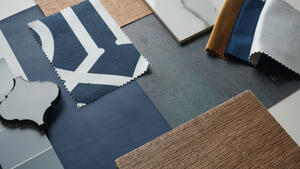Dear Sean,
I just read your recent column about burnout, and I appreciated your response. I have many of the same feelings as that letter writer but with an extra twist: I know I’m ready to leave interior design and enter the next phase of my career. How do I take my successful 25-year design career running my own business and pivot into high-end fashion and textiles? I am ready to take that leap, but I’m not sure where to begin.
Preparing to Pivot
Dear Preparing,
My focus is on design and I am by no means an expert on the ins and outs of the fashion industry. So my advice will be less about the specifics of the fashion opportunities you should seek out and more about translating your gifts from interior design to fashion and fine textiles.
Art transcends its medium, and what made you a successful interior designer for over 25 years is what will translate to your new career: Simply, it is the ability to create joy. The question becomes how your creative and artistic soul—your unique, one-of-a-kind vision—translates to fashion and textiles.
That requires a clear-eyed look in the mirror. How much do you really care about what it is that you want to share? What is driving you? Why? You need talent and skill and experience, sure, but perhaps above all else you need conviction. Conviction is your DNA, and it is beyond the medium—it is why you are compelled to create. Conviction in your perspective is not enough, though. What underlies it all is your conviction to the practice of your craft—quite literally how you get from here to there. That matters because it is how you share your idiosyncratic vision with the world, how you bring your clients along on the creative journey.
Your idiosyncrasy is not that you love high-end fashion and textiles—it is how you go about creating the fashion and textiles for your audience—those who care deeply about not just couture fashion and textiles but about how you would create for them.
We all try to live in our comfort zone by default. The essence of what you do as an artist and creative business is to take us outside of that comfort zone so that our hopes can be realized in the uncomfortable process of transformation. There is simply no way to do that if you are trying to keep everyone comfortable. Your gift is that you see what your clients cannot. Whether those clients are for design or fashion is irrelevant; the gift remains. There is no such thing as easy and stress-free when it comes to a creative business, whether interior design, or fashion and textiles. There is only resolution to necessary stress—the notion that this might not work, but let us try the best we can in service of what it might become. Own your ability to transform lives through your creative work.
Which brings me to my last point: integrity. You started your climb in interior design the second you decided that your voice mattered, not a moment earlier. Before that, you were just building to the point of conviction in your voice. Some people are born with the compulsion to have their voice heard; others take a little longer to get there. Many people mistake confidence as the driving force behind using their voice, but in fact it’s not about confidence, it’s about living in integrity and owning your authentic desire to share. Confidence is personal—the desire to share is universal. There is a huge difference. Your 25 years earned you the privilege of wisdom. Do not waste it.
If you are as burned-out as you say, you probably feel like you have to be in service to your business, instead of in service to your clients, to keep your firm afloat. That means you’re compromising the quality of your work as well as your stature as an accomplished interior designer—you’re risking the voice that got you to where you are today. The move to fashion and textiles has to be born of an organic compulsion to (re)discover that creative voice.
Does it mean you do not have to do the work every day to be better as an artist, a business, a human? Of course not—that is the price of admission. Talent, wisdom and experience must be experienced and lived as verbs, not nouns. One-of-a-kind creative DNA lives within every artist, every creative business, whether interior design or fashion and textiles—you cannot hide from it, and if you succumb to “creative” work that overlooks your very DNA, what is the point? What you stand for matters, regardless of the medium of your art, and the roots have to grow ever deeper to continually discover purpose. So start with exploring and rediscovering your voice—the artistic energy and creative vision that fuels and excites you—in order to uncover what you are compelled (perhaps obsessively) to share in fashion and textiles, and the rest will take care of itself.
____________
Sean Low is the go-to business coach for interior designers. His clients have included Nate Berkus, Sawyer Berson, Vicente Wolf, Barry Dixon, Kevin Isbell and McGrath II. Low earned his law degree from the University of Pennsylvania, and as founder-president of The Business of Being Creative, he has long consulted for design businesses. In his Business Advice column for BOH, he answers designers’ most pressing questions. Have a dilemma? Send us an email—and don’t worry, we can keep your details anonymous.





























